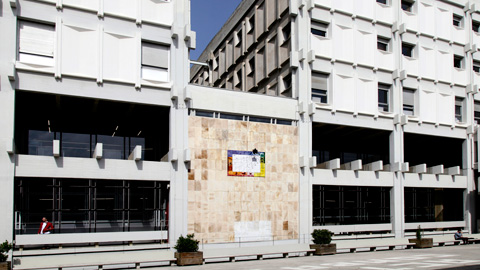
Irepan Salvador-Martínez: Quantifying adaptive evolution of the human immune cell landscape
Quantifying adaptive evolution of the human immune cell landscape
Irepan Salvador-Martínez
CNAG-CRG, Centre for Genomic Regulation (CRG), Barcelona Institute of Science and Technology (BIST), Barcelona, Spain.
Departament de Genètica i de Microbiologia, Universitat Autònoma de Barcelona, Barcelona, Spain
The human immune system is under constant evolutionary pressure, mostly through its role as first line of defence against pathogens. Accordingly, population genomics studies have shown that immune related genes have a high rate of adaptative evolution. However, these studies were mainly based on gene sets without cellular context, leaving the adaptive role of different immune cell types and states uncharted. Here, we show differential adaptation of human immune cell types at an unprecedented resolution by combining single-cell RNA sequencing of the developing immune system with adaptation genomics. In particular, we inferred the adaptation rate (α) of different immune cell types of the Human Cell Atlas (HCA) developmental immune system reference atlas from polymorphism and divergence data using a McDonald Kreitman-based strategy. Our analysis revealed eleven cell types, from both the lymphoid and myeloid compartments, to have a significantly high adaptation rate. Specifically, eight cell types had an inferred α > 0.4 (i.e., more than 40% of fixed mutations conferring fitness benefits in humans since their split from chimpanzees), more than double the average α value of all human protein-coding sequences (α =~ 0.15). Functional enrichment analysis of genes driving this adaptation signal suggest various functions to be under positive selection, including T-cell mediated cytotoxicity (Type 1 innate T-cells), response to bacteria (neutrophiles), T-cell activation (plasmacytoid dendritic cell, pDCs), T-cell receptor pathway (CD8+ T-cells) and tissue morphogenesis and support (Kuppfer-like macrophage).
As proof of concept that our analysis on developmental/normal stages of the immune system can be also extended to cells in activated states, we applied our method to iPSC-derived macrophages undergoing activation by different stimuli. This allowed us to quantify the adaptative evolution of macrophage response to bacterial and viral infections, an example of evolutionary arms race between humans and pathogens.
Together, our results reveal a wide diversity of immune cell derived functions showing evidence of adaptive evolution in humans. Furthermore, our study demonstrates how single-cell RNA sequencing atlases can be used to quantify adaptive evolution of diverse cell types in humans to complement efforts to chart the complexity in composition, architecture, and function of the human body.



